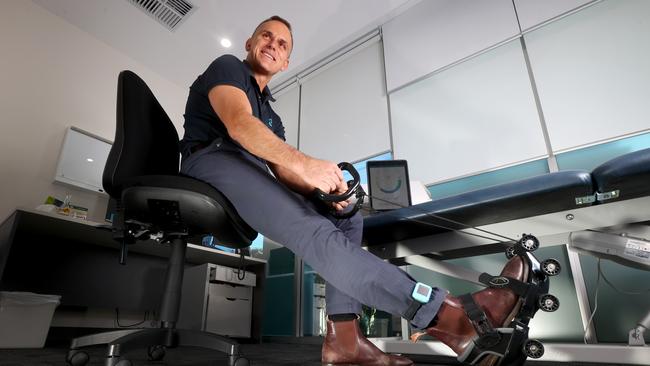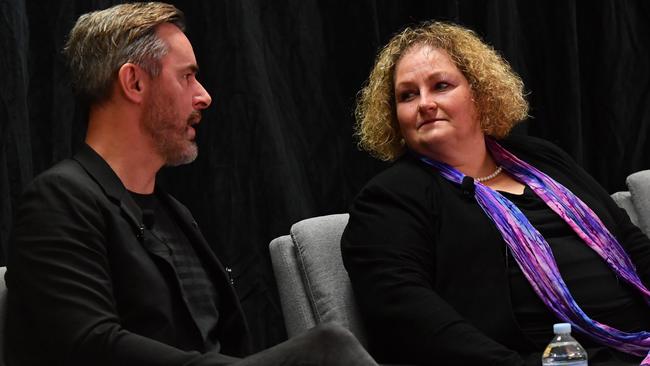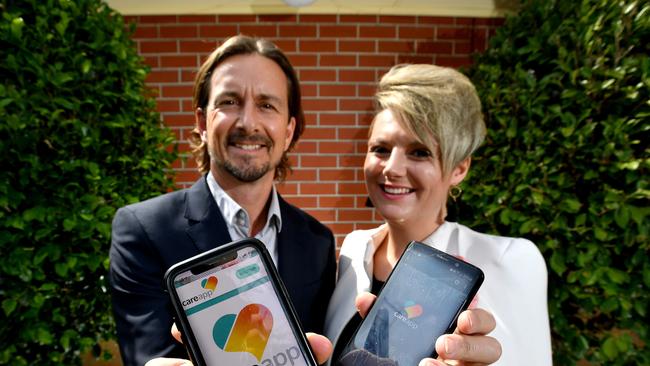Fearless Coversations: Forum hears health tech boom virtually unstoppable
A Fearless Conversations forum discussed the health technology boom, from AI and thinkables to brain-powered artificial limbs and virtual hospitals.
Fearless Conversations
Don't miss out on the headlines from Fearless Conversations. Followed categories will be added to My News.
HEALTH technology is moving from “wearables” to “thinkables”, and virtual emergency departments are a coming trend, experts predict.
In the process, South Australia stands to gain high-skilled jobs, improve quality of life, prevent minor problems from developing into hospital cases, and save lives.
The latest Fearless Conversations forum – a 13-week collaboration between The Advertiser /Sunday Mail and Flinders University covering topics vital to SA’s future – revealed opportunities, as well as pitfalls, with health technology and medical devices.
Digital Health CRC chief executive Terry Sweeney, Flinders University Professor of Digital Health Systems Trish Williams, CareApp founder Allison Nikula and orthopaedic surgeon Matthew Liptak joined the forum.
Dr Sweeney revealed health data was doubling every 73 days yet major healthcare agencies only used about 15 per cent of it – but artificial intelligence would help harness it to drive better decision making.
Noting that adverse patient incidents cost the nation about $4bn a year, and the global cost of chronic disease was $47 trillion a year, he said there were huge cost savings to be made through technology, for example a trial now on in Adelaide hospitals to predict adverse events in patients, and prevent them.
Dr Sweeney raised the prospect of fascinating developments on the horizon.
“We’ve done some work quite recently with capturing brainwaves — to move an artificial limb for example, so we now have the ability to clench your fist, open a fist, turn our artificial limb by using brain waves in the same way that we can,” he said.
“There’s a long way to go, but there’s a lot of really exciting developments happening in that field of using our mind to control a physical device.”
He also raised “thinkables”. While “wearable” devices checked heart rate, steps walked and so on, thinkables based on the brain’s neural networks would monitor health signs and give warning of looming problems.
“So if you are an elderly person and there’s a risk of you having a fall, being told in advance that this may happen so you can get to a safe place is going to be a fantastic breakthrough,” he said.
The forum heard the pandemic had accelerated moves to treat patients remotely via things such as telehealth.
The Women’s and Children’s Hospital has just opened a “virtual emergency department” and Dr Sweeney worked with a Sydney hospital on a similar project.
“In six months they interacted with over 8000 patients. Many would have presented to the hospital if it wasn’t for that virtual consultation,” he said.
“Virtual care and virtual hospitals is a trend that’s going to accelerate rapidly.”

Liptak’s rehab system a game-changer
AS a Crows club champion, footballer Matthew Liptak constantly sought to excel, improve and win the respect of fellow players.
Now as an orthopaedic surgeon, Dr Liptak has the same goals in mind, with a game-changing hi-tech rehabilitation invention for knee replacements.
His MaXm Skate system has just received Therapeutic Goods Administration approval and his company is in the process of seeking to have it registered for a Medicare rebate.
A randomised control trial showed its potential to save up to $25,000 a patient, including through early discharge from hospital.
The system is backed by heavy hitters from sport and business including Rob Chapman, David Pittman, Dr Steve Saunders, Stuart Derbyshire and David Whelan.
It seems deceptively simple — a device that looks like a rollerskate goes on your foot, a smartwatch device goes on your ankle and its sensors monitor range and movement while users go through physiotherapy exercises at home twice a day.
The data can be monitored remotely by health care workers to ensure the rehabilitation is being done correctly, and alerts are triggered if there are problems.
Dr Liptak outlined the leap into technology at the Fearless Conversations forum and in a later interview with The Advertiser.
He stressed the importance of TGA approval for the system as a medical device – in contrast to wrist-worn devices monitoring blood pressure, heart rate, steps taken and so forth, which do not have such approval, so cannot be used by clinicians as an accurate health record.
“This is an evidence-based, innovative health solution providing a collaborative health experience,” he said.
“Patients really enjoy it — it is safe, effective and cost effective, providing significant savings to the overall health system.
“Being evidence-based and winning TGA approval is pivotal — having the respect of my peers for this system is paramount.”
The device is not yet on the market and the company is working through whether to sell it or rent it — depending on a Medicare rebate — but Dr Liptak noted the lucrative export potential of a “global solution.”
He also said people who have used the system refer to it as “rehab on holiday” as they can take the portable system away while recovering from knee surgery rather than being tied to appointments. It is also ideal for remote settings — or lockdowns.
Dr Liptak’s competitive sportsman streak shows when he says you can “gamify” it.
“You get objective data to measure and anything you can measure you want to do better at, whether it is running the 100m or improving your range and movements in rehab,” he said.
“You also get immediate feedback on how well you are doing, which gives patients a lift.”

Healthy growth in hi-tech jobs
THERE are “massive opportunities” for a wide range of highly skilled jobs linked to health technology, Flinders University Professor of Digital Health Systems Trish Williams believes.
It can also help unclog hospital emergency departments, as wearable and home-based monitoring systems alert people to potential problems before they escalate.
“EDs are clogged with people who have chronic conditions, and we have the ability now to do a lot of monitoring that can help prevent some of those admissions,” she told the forum.
The forum also discussed “clunky” technology, with strong views that patients and clinicians need to be involved with development from the start.
“There are still a level of major IT projects that fail, 50 per cent of them don’t go very well,” Prof Williams said.
“The majority of the problems start at that very early stage when you don’t have the right people in the room at the beginning — you cannot do that in healthcare.”
Prof Williams also said there was an overarching framework around privacy protections of health data but there was general agreement that, in an emergency, quick access to records could save lives.
“When I go into emergency, I don’t care who looks at my data, I want anybody who can fix me to look at it,” she said.

Family ties inspire a grand idea for care app maker
ALLISON Nikula started her health technology business with $3.50 and an idea inspired by her grandparents. Now it is a prime example of how technology can benefit families.
An occupational therapist, she found her grandparents were increasingly needing support. The family wanted to contribute to their care but found communication was fragmented.
This gave her the idea for CareApp, linking families with their loved ones in care, and their carers.
“It started with a $3.50 cappuccino and a few sketches on a piece of paper, talking with a care worker and asking, ‘What do you think?’,” she said.
“Every day I still speak with our users, whether that be family members, disability support workers, lifestyle co-ordinators and the decision makers.”
Connecting all involved in an aged care setting may require the person in care to be schooled in technology but Ms Nikula says she has “people aged 85-plus using CareApp”.
“We are working hand-in-hand with users — we should not underestimate people’s skills,” she told the forum. “It’s about holding their hand and bringing them along for the ride.”
Ms Nikula and other speakers, such as orthopaedic surgeons Dr Matthew Liptak, stressed the importance of putting both patients and clinicians at the centre of developing new health technology, rather than having it presented to them and being told to use it.
Dr Liptak recalls “swearing at my screen” in frustration at the electronic patient record system EPAS which blew out in time and cost and was partly abandoned midway.
The forum also heard that many wrist-worn monitoring devices and health apps were not approved by the Therapeutic Goods Administration as medical devices.
Dr Liptak said this meant clinicians could not use the information as accurate evidence of past health situations.
Professor Trish Williams is working on an international standard for such devices.




